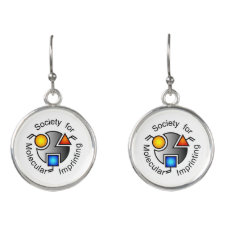
Authors: Marx KA
Article Title: Quartz crystal microbalance: A useful tool for studying thin polymer films and complex biomolecular systems at the solution-surface interface.
Publication date: 2003
Journal: Biomacromolecules
Volume: 4
Issue: (5)
Page numbers: 1099-1120.
DOI: 10.1021/bm020116i
Abstract: The quartz crystal microbalance (QCM) is a simple, cost effective, high-resolution mass sensing technique, based upon the piezoelectric effect. As a methodology, the QCM evolved a solution measurement capability in largely analytical chemistry and electrochemistry applications due to its sensitive solution-surface interface measurement capability. The technique possesses a wide detection range. At the low mass end, it can detect monolayer surface coverage by small molecules or polymer films. At the upper end, it is capable of detecting much larger masses bound to the surface. These can be complex arrays of biopolymers and biomacromolecules, even whole cells. In addition, the QCM can provide information about the energy dissipating properties of the bound surface mass. Another important and unique feature of the technique is the ability to measure mass and energy dissipation properties of films while simultaneously carrying out electrochemistry on solution species or upon film systems bound to the upper electrode on the oscillating quartz crystal surface. These measurements can describe the course of electropolymerization of a film or can reveal ion or solute transport within a film during changes in the film environment or state, including the oxidation state for an electroactive film driven by the underlying surface potential. The past decade has witnessed an explosive growth in the application of the QCM technique to the study of a wide range of molecular systems at the solution- surface interface, in particular, biopolymer and biochemical systems. In this report, we start with a brief historical and technical overview. Then we discuss the application of the QCM technique to measurements involving micellar systems, self- assembling monolayers and their phase transition behavior, molecularly imprinted polymers, chemical sensors, films formed using the layer-by-layer assembly technique, and biopolymer films and point out the utility of the electrochemical capabilities of the technique to characterizing film properties, especially electroactive polymer films. We also describe the wide range of surface chemistries and attachment strategies used by investigators to bring about surface attachment and multi-layer interactions of these thin film systems. Next we review the wide range of recent applications of the technique to: studies of complex biochemical and biomimetic systems, the creation of protein and nucleic acid biosensors, studies of attached living cells and whole cell biosensor applications. Finally, we discuss future technical directions and applications of the QCM technique to areas such as drug discovery



Join the Society for Molecular Imprinting

New items RSS feed
Sign-up for e-mail updates:
Choose between receiving an occasional newsletter or more frequent e-mail alerts.
Click here to go to the sign-up page.
Is your name elemental or peptidic? Enter your name and find out by clicking either of the buttons below!
Other products you may like:
 MIPdatabase
MIPdatabase









